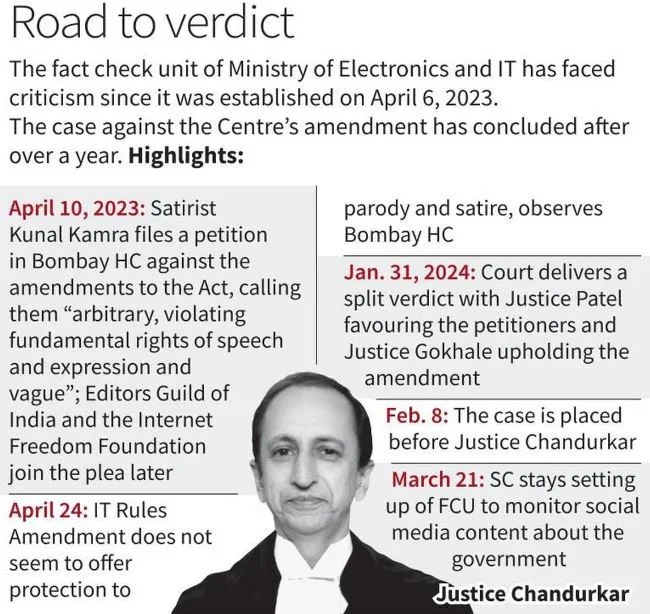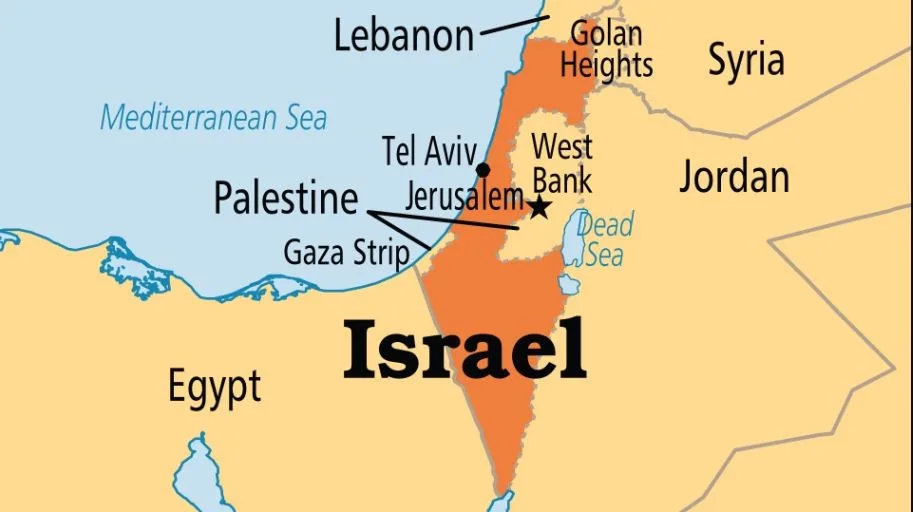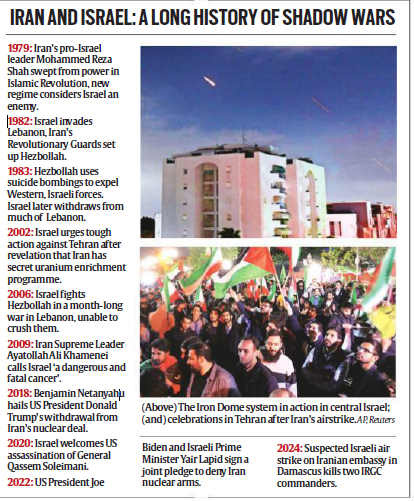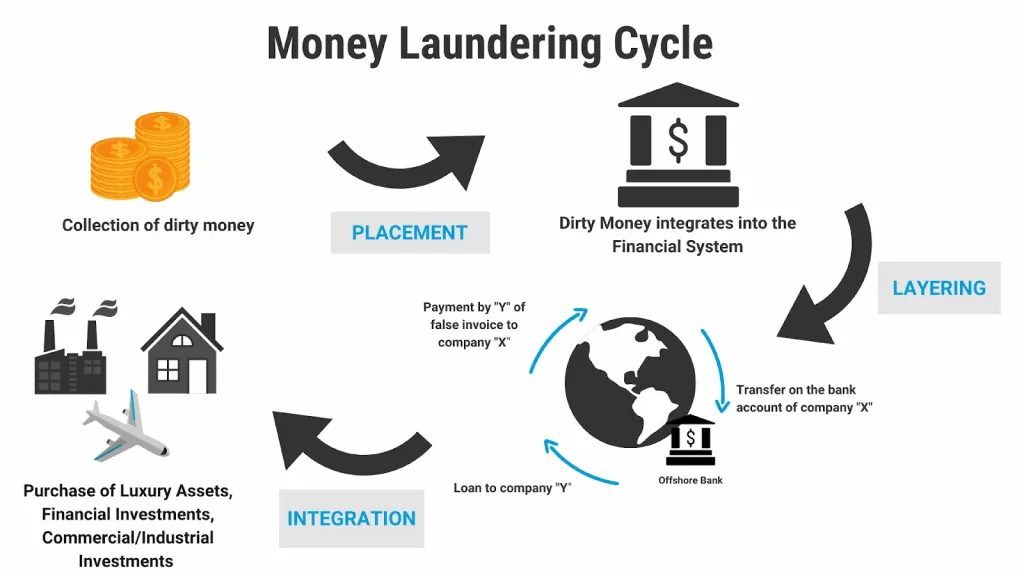UPSC DAILY CURRENT AFFAIRS (21ST SEPTEMBER, 2024)
Gandhi-Ambedkar Debate on Separate Electorate
Syllabus: GS1/ History, GS2/ Polity
Context
- In September 1932, at the Yerawada Central Jail in Pune, Mahatma Gandhi began fasting unto death against the award of separate electorates to the Scheduled Castes.
Background
- At the 1931 Round Table Conference in London, Gandhi and Ambedkar had a disagreement regarding the representation of the Untouchables.
- Gandhi accepted separate electorates for Muslims and Sikhs but felt the Untouchables could be integrated into Hindu society without needing a separate electorate.
The Poona pact
- The origins of the Poona Pact are tied to the Communal Award of August 1932, which sought to allocate separate electorates for various minority groups, including Muslims, Sikhs, Indian Christians, and the Depressed Classes.
- As part of this Award, 71 seats in the central legislature were reserved specifically for the Depressed Classes.
- Gandhi, in Yerawada Jail, opposed separate electorates for the Depressed Classes, and began a fast unto death in protest.
- On September 24, 1932, Ambedkar met Gandhi in jail, and they signed the Poona Pact.
- Instead of separate electorates, the Untouchables would have reserved seats in general constituencies, with the number of seats in provincial legislatures increasing from 78 to 148.
Gandhi vs Ambedkar on caste
- Mahatma Gandhi views on caste system;
- He opposed untouchability, calling Untouchables “Harijans” (Children of God). Despite this, Gandhi never fully rejected the caste system itself.
- He believed that caste could be reformed from within, by eliminating untouchability and fostering social harmony, while still preserving the traditional varna (caste) system.
- Gandhi saw caste as a social organization that had a place in Hinduism and thought reforms within it could help uplift marginalized groups.
- Ambedkar views on caste system;
- He completely rejected the caste system as a whole, believing that it was inherently oppressive and divisive.
- Ambedkar argued that caste discrimination was rooted in Hindu religious scriptures (Shastras), which gave it divine legitimacy and believed no reform could effectively dismantle this deeply entrenched discrimination.
- He advocated for separate electorates for the Depressed Classes to ensure political representation and power for marginalized communities.
Concluding remarks
- Gandhi sought to reform the caste system by eliminating untouchability and preserving social harmony, Ambedkar called for the complete rejection of the caste system, seeing it as inherently unjust and rooted in religious authority.
- Gandhi’s approach was towards reform within society opposed to the radical approach followed by Ambedkar.
Bombay HC Struck Down Fact Check Unit
Syllabus: GS2/Governance
Context
- The Bombay High Court struck down the amended Information Technology Rules, 2023, which empowered the Centre to set up a fact check unit (FCU) to identify fake, false and misleading information about the government.
About

Amended Information Technology (IT) Rules
- The amendment to The Information Technology (Intermediary Guidelines and Digital Media Ethics Code) Rules, 2021 notified in 2023 did two things:
- they brought in a legal framework for the online gaming eco-system
- and introduced a legal mechanism for the government to fact-check online content pertaining to “government business”.
- The Rules made it obligatory on intermediaries like social media platforms “to not to publish, share or host fake, false or misleading information in respect of any business of the Central Government”.
- The changes raised concern that the FCU will make the government the “sole arbiter of truth” in respect of any business related to itself.
- Subsequently, the rules were challenged before the Bombay High Court.
Concerns Raised Due to Amended Rules
- IT Rules 2021 were challenged to be violative of Article 14, Article 19(1)(a) and (g), and Article 21 of the Constitution, and Section 79 and the Information Technology Act, 2000 (IT Act).
- Article 14 refers to equality before the law and the provisions referred to under Article 19 pertain to the right to freedom of speech and expression, and the right to practice a profession or trade.
- The amendment essentially expanded the general term “fake news” to include fake news involving government business.
- The petitioners argued before the court that this would have a “chilling effect” upon the freedom of speech and expression.
- Section 69 of the IT Act empowers the government to issue directions to block public access to any information through any computer resource. The Rules were framed essentially in exercise of this power.
- The Bombay High Court examined if these Rules were violative of free speech, and were arbitrary in nature.
What is the Fact Check Unit?
- It was established under the Press Information Bureau (PIB) and started its operations in 2019.
- It was constituted to flag “fake, false or misleading online content related to the government.
- The FCU would flag off the fake, false, and misleading facts about the business of the government to social media intermediaries.
- Once such a post is flagged off, the intermediary has the option of either taking down the post or putting a disclaimer on the same.
- In taking the second option, the intermediary loses its safe harbour/immunity and stands liable for legal action.
- Recently, The government notified the Fact Check Unit under Information Technology Rules, 2021.
Israel-Hezbollah Conflict
Syllabus: GS2/IR
Context
- Tensions in West Asia have spiked after pagers and hand-held radios exploded in attacks across Lebanon and parts of Syria.
- Hezbollah, the Iranian-backed Lebanese political party and militant group, has accused Israel of carrying out the attacks, which the Israelis have neither owned nor disowned.
Gaza War
- After the Palestinian militant group Hamas attacked southern Israel last year, Israel launched its massive retaliation, in which more than 41,000 Palestinians have been killed in Gaza so far.
- After 11 months of airstrikes and ground operations, about 100 hostages remain in Hamas captivity.
- Throughout this period, Hezbollah has engaged Israel through shelling and rocket fire along its northern border, leading to the displacement of Israelis.

Timeline of the Iran-Israel Conflict

Future Course of the War
- A statement from Prime Minister Benjamin Netanyahu’s office strongly suggested the possibility of expanding military operations to get Hezbollah to stop firing at Israeli targets.
- There are several scenarios possible over the next few weeks.
- There could be a repeat of the attack when Iran launched a wave of aerial strikes on targets in Israel, though with limited impact.
- Iran could coordinate with its partners in the so-called Axis of Resistance — Hamas, Hezbollah and the Houthis — to carry out attacks on Israel.
- Israel, on its part, could carry out an aerial offensive against not just Hezbollah but also the Lebanese state apparatus.
Concerns for India
- Threat to Indian Community: There are about 18,000 Indians in Israel and about 5,000-10,000 Indians in Iran, about 90 lakh people are living and working in the Gulf and West Asia region.
- Any conflict that expands will end up posing a risk to the Indian community that is based in the region.
- Energy Security: The West Asia region contributes to India’s 80 percent of oil supplies, which a potential conflict will impact.
- India has been able to minimise the impact of oil prices due to the Russia-Ukraine war by buying Russian oil at discounted prices, but this conflict will have an adverse impact on energy prices.
- Investment and Strategic Importance: India has invested in a strategic relationship with major Arab countries, Iran, and Israel.
- India sees the region as its extended neighbourhood, and it has been pushing for the India-Middle-East-Europe Economic corridor, which has strategic as well as economic benefits.
- Chabahar in Iran is another strategic economic project, which acts as a gateway to Afghanistan and Central Asia — since Pakistan denies land transit to Indian goods.
- Any conflict in the region, and the implementation of any US sanctions will also impact India’s plans for Chabahar port.
- In addition, the India-Israel-UAE-US I2U2 initiative and plans to connect Indian cargo routes through the International North South Transport Corridor (INSTC) to Russia could be affected.
- Defence Relations with Israel: India has a very deep strategic relationship with Israel, especially in the context of defence and security partnership.
India’s Stand
- Maintaining a Balanced Stand: India’s stakes in the bilateral relationships with both Israel and Iran are huge, India will expect both the countries to avoid military actions that will trigger a dangerous and wider war in the region.
- Based on the Complex Regional Politics: Inter-state and intra-state conflicts in the Middle East are deep and pervasive, and India will have to forever balance its engagement with key regional actors — Egypt, Iran, Israel, Qatar, Turkey, Saudi Arabia, and the United Arab Emirates — whose orientation and interests are different and often in conflict.
- India’s call for de-escalation between Israel and Iran is about recognising the complexity of the region’s politics.
- Non- Ideological Engagement: The non-ideological engagement with the region is a necessary complement to India’s expanding interests in the Middle East.
- India’s interests in the region are no longer limited to oil imports and labour exports.
- The Gulf Arab states — especially Saudi Arabia and the United Arab Emirates — have emerged as major economic and political partners for India.
Way Ahead
- India has so far made no statements on the volatile situation in the region. In April, after the Iranian attack on Israel, India had expressed “serious concern” at the escalation of hostilities, and called for “immediate de-escalation”.
- India has strategic ties with both Iran and Israel — and for decades, it has been able to balance between the two sides. But if the conflict widens, it would be difficult for it to maintain an ambivalent position.
- In the context of such deep ties with both Israel and Iran, India has difficulty in choosing sides.
- India’s position that there should be “immediate de-escalation” and “step back from violence” and “return to the path of diplomacy” is, therefore, crucial to its national interest.
FATF Lauds India’s Efforts to Tackle Illicit Finance
Syllabus: GS3/ Internal Security
Context
- The Financial Action Task Force (FATF) in its Mutual Evaluation Report for India ‘Anti-Money laundering and Counter terrorist financing Measures’ has lauded India’s efforts to implement measures to tackle illicit finance including money laundering and terror funding.
What is Money Laundering?
- Money laundering is the illegal process of making large amounts of money generated by criminal activity, such as drug trafficking or terrorist funding, appear to have come from a legitimate source.
- In terrorism financing the funds were used to procure arms and ammunition and for training the cadres of the violent extremist organization, among other purposes.
- The money from the criminal activity is considered dirty, and the process “launders” it to make it look clean.

Measures taken by India
- Key Initiatives;
- Jan Dhan-Aadhaar-Mobile (JAM): Praised for enhancing financial transparency.
- GST E-Invoices and E-Bills: Promotes transparency in the supply chain.
- Indian Cyber Crime Coordination Centre: Strengthens cybercrime enforcement.
- Central KYC Records Registry (CKYCR): Repository for KYC data and customer records.
- Task Forces and Committees: Formed to address corruption, black money, drug trafficking, and fake currency.
- Collaboration between the Financial Intelligence Unit, law enforcement, and regulatory bodies.
- Investigative Agencies: The National Investigation Agency (NIA) and Enforcement Directorate (ED) effectively conducted probes.
- Task Force on Shell Companies: Over 3,82,000 entities were deregistered from 2017-2021.
| Financial Action Task Force (FATF) – The Financial Action Task Force (FATF) is an intergovernmental organization which leads global action to tackle money laundering, terrorist and proliferation financing. – History: FATF was established in 1989 by the G7 to examine and develop measures to combat money laundering. It originally included the G7 countries, the European Commission and eight other countries. In 2001, the FATF expanded its mandate to also combat terrorist financing. – Members: FATF has 40 members including India. Recently Indonesia has become a member of FATF. – FATF has the authority to issue warnings and sanctions against countries that fail to comply with its standards, such as suspension of membership and blacklisting. FATF ‘Grey list’ and ‘Blacklist’ – Black List: Countries known as Non-Cooperative Countries or Territories (NCCTs) are put on the Blacklist. These countries support terror funding and money laundering activities. – Grey List: Countries that are considered a safe haven for supporting terror funding and money laundering are put in the FATF Grey list. |
Recommendations to address AI-related risks and governance gaps
Syllabus: GS 2/Governance/GS3/Science and Tech
In News
- The U.N. AI advisory body released a final report with seven recommendations to address AI-related risks and governance gaps.
Key recommendations
- Scientific Panel: Create an impartial panel to provide reliable scientific knowledge about AI, bridging information gaps between AI labs and the global community.
- Policy Dialogue: Initiate a policy dialogue on AI governance to foster international cooperation.
- AI Standards Exchange: Establish a platform for sharing AI standards and best practices.
- Global AI Capacity Development Network: Strengthen governance capacities by building a global network.
- Global AI Fund: Address capacity gaps through a dedicated fund.
- AI Data Framework: Develop a transparent and accountable global framework for AI data.
- AI Office: Set up a small AI office to coordinate implementation efforts.
Emerging Challenges
- The rapid spread of AI, especially since OpenAI’s ChatGPT (2022), has raised concerns about misinformation, fake news, and copyright infringement.
- The U.N. expressed concern about AI development being dominated by a few multinationals, potentially leaving people without a voice in its use.
- Only a handful of countries have specific AI laws.
- Few countries have enacted AI laws, with the European Union leading with its AI Act. The U.S. favors voluntary compliance, and China focuses on maintaining social stability.
- The U.S. and about 60 countries endorsed a “blueprint for action” to regulate AI use in the military, but China did not support the document
- China balances social stability and state control.
India’ Approach
- India is emerging as a key player in AI regulation and development, with its large consumer base and labor force being crucial for technology companies.
- By 2030, India will host over 10,000 deep tech start-ups.
- India AI Mission Funding: The government has allocated ₹10,300 crore to the India AI mission to bolster AI innovation and strengthen the public-private partnership ecosystem.
- Technological Investments: The funds will be used to deploy 10,000 Graphic Processing Units (GPUs), Large Multi-Models (LMMs), and promote AI-based research collaboration and innovative projects.
- Balancing Economic Growth and SDGs: India’s AI strategy must align with the Sustainable Development Goals (SDGs), ensuring responsible AI use that supports innovation while managing associated risks.
- Phased Approach to AI Governance: India is likely to adopt a gradual, phase-led approach to AI governance, promoting a fair and inclusive AI system that supports economic growth without compromising ethical and social responsibilities
Conclusion and Way Forward
- The rapid advancement of AI technologies has significant economic, societal, and ethical implications.
- Effective governance is necessary to maximize AI’s benefits while mitigating its risks.
- AI systems must be fair, unbiased, and accountable.
FACTS IN NEWS
Kalaripayattu
Syllabus:GS 1/Art and Culture
In News
- The trailer for the upcoming film Look Back, which explores the ancient martial art of Kalaripayattu was recently unveiled.
About Kalaripayattu
- It is an ancient martial art from Kerala, India, and is practiced globally today.
- Historical links : Its exact origin is uncertain, with estimates ranging from 200 BCE to 600 CE, and it peaked in popularity between the 14th and 16th centuries.
- Some myths credit its creation to Lord Parasurama, but historians dispute this claim.
- It was used by early inhabitants for hunting, and Kalaripayattu evolved into a sophisticated system of combat.
- Cultural Significance: Chroniclers and poets have consistently praised its complex techniques, fluid movements, and the flexibility of its practitioners.
- Kalaripayattu was taught in villages across Kerala, with training centers (kalaris) commonly located near Devi temples.
- Traditionally, mastery in Kalaripayattu was linked to masculinity, with those unable to fight considered weak.
- Women also practiced Kalaripayattu and could match male warriors in skill and combat abilities.
PM Vishwakarma Scheme
Syllabus: GS2/Governance
Context
- The Prime Minister addressed the National PM Vishwakarma Program in Maharashtra.
About
- The Prime Minister launched the ‘Acharya Chanakya Skill Development ’ scheme and ‘Punyashlok Ahilyadevi Holkar Women Startup Scheme’ of Maharashtra Government.
- The Punyashlok Ahilyadevi scheme will provide early-stage support to women-led startups in Maharashtra, offering up to ₹25 lakh in financial assistance.
PM Vishwakarma Program
- It is a central sector scheme, launched by the Ministry of Micro, small and medium enterprises in 2023 for a period of five years.
- The scheme aims to provide end-to-end support to artisans and crafts people who work with their hands and tools.
- Eighteen traditional trades are covered in the first instance under PM Vishwakarma.
Benefits under the Scheme
- Recognition: Recognition through PM Vishwakarma certificate and ID card.
- Skill Upgradation: Basic Training of 5-7 days and Advanced Training of 15 days or more, with a stipend of Rs. 500 per day.
- Toolkit Incentive: A toolkit incentive of upto Rs. 15,000 in the form of e-vouchers at the beginning of Basic Skill Training.
- Credit Support: Collateral free ‘Enterprise Development Loans’ of upto Rs. 3 lakh, at a concessional rate of interest fixed at 5%.
- Marketing Support: Marketing support will be provided to the artisans and craftspeople in the form of quality certification, branding, onboarding on e-commerce platforms to improve linkage to value chain.
India Joins International Big Cat Alliance
Syllabus: GS3/Environment
Context
- After an approval from the Union Cabinet, India has formally joined the International Big Cat Alliance (IBCA), by signing and ratification of the Framework Agreement of IBCA.
International Big Cat Alliance (IBCA)
- The alliance was conceived as a multi-country, multi-agency coalition of 96 big cat range countries and others to establish a common platform for conservation.
- Objective: Focus of the Alliance is to conserve seven big cats of the world which includes Tiger, Lion, Leopard, Snow Leopard, Puma, Jaguar and Cheetah.
- In India out of the seven big cats only five — tiger, lion, leopard, snow leopard and cheetah — are found.
- Funding: The government also approved a one-time budgetary support of ₹150 crore for a period of five years from 2023-24 to 2027-28.
- Governance: IBCA governance consists of an Assembly of Members, Standing Committee and a Secretariat with its Head Quarter in India.
- All UN member countries are eligible for becoming a member of IBCA.
- So far 4 countries have become members of IBCA including India, Nicaragua, Eswatini and Somalia.
Neuralink’s Blindsight
Syllabus: GS3/ Science and Technology
Context
- Elon Musk’s start-up Neuralink has been granted approval from the US Food and Drug Administration (FDA) for its upcoming product Blindsight.
What is Blindsight?
- Blindsight is a brain-computer interface (BCI) device, or a chip, surgically implanted in the brain, that will enable those who are blind to see.
- It will only work for those who have suffered damage to their optic nerve, but not the visual cortex of the brain which processes imagery and input from the eyes.
- The device will enable transmission of signals by bypassing the optic nerve and directly stimulating the visual cortex of the brain to make imagery visible to those without eyesight.
About Neuralink
- Neuralink is a neurotechnology company that develops implantable brain-computer interfaces (BCIs).
- These devices connect the brain and a computer, and instructions through the computer can be utilized to send electrical signals to the device, and vice-versa.
Radio Noise from Starlink Satellites
Syllabus: GS3/Space
Context
- As per a study in the journal Astronomy & Astrophysics Elon Musk’s Starlink satellites are creating radio noise.
About
- Radio noise from satellites refers to unwanted radio frequency signals and interference generated by satellites in orbit.
- This noise can affect various communication and observational systems, especially in the field of radio astronomy.
- Radio astronomy uses supersensitive antennas to detect faint radio signals emitted by stars, black holes and other objects in the universe.
- SpaceX’s new Starlink satellites produce 32 times more radio noise than their predecessors, causing concerns among astronomers about their interference with radio astronomy observations.
- Starlink “constellation” comprises more than 6,300 working satellites orbiting Earth at an altitude of around 550 km.
- These satellites deliver high-speed internet to places which otherwise would not have access to it.
Global Cybersecurity Index 2024
Syllabus: GS 3/Science and technology
In News
- India has achieved Tier 1 status in the Global Cybersecurity Index (GCI) 2024, with a score of 98.49 out of 100, marking it as a global leader in cybersecurity.
About
- India’s success is driven by robust cybercrime laws, sector-specific Computer Incident Response Teams (CSIRTs), education initiatives, and international collaborations.
- India’s global leadership is reinforced by international partnerships and agreements to enhance cybersecurity capacity and information sharing
About GCI 2024
- GCI 2024 Assessment: The GCI evaluated countries based on five pillars—legal, technical, organizational, capacity development, and cooperation—using a detailed questionnaire covering 83 questions and 20 indicators.
- It is published by the International Telecommunication Union (ITU).
Congo Basin
Syllabus: GS3/Environment
Context
- The Wildlife Conservation Society (WCS) has come up with the High Integrity Forest (HIFOR) Investment Initiative, an innovative mechanism that could unleash critical finances necessary for the protection of the Congo Basin forest.
What is the High Integrity Forest (HIFOR) Investment Initiative?
- The HIFOR initiative is a Payment for Ecosystem Services scheme designed by WCS as a tool to be used by all those interested in the conservation of high integrity tropical forests.
- HIFOR units are a new tradable asset that recognizes and rewards the essential climate services and biodiversity conservation that intact tropical forests provide, including ongoing net removal of CO2 from the atmosphere.
Congo Basin
- It is the world’s second largest rainforest after the Amazon, spanning across six countries—Cameroon, Central African Republic, Democratic Republic of the Congo, Republic of the Congo, Equatorial Guinea and Gabon.
- As the second largest lung of the world, the Congo Basin shelters approximately 26% of the planet’s rain forests and a wealth of biodiversity.
- However, despite its crucial ecological importance, the Congo Basin receives significantly less funding compared to the Amazon and the Borneo-Mekong basins.
